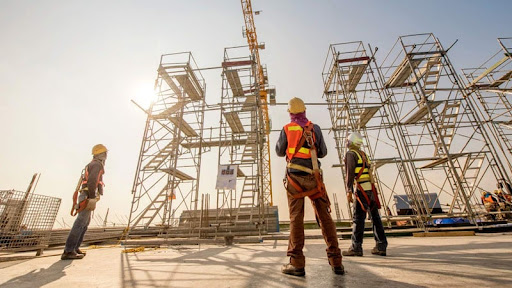
Yes, you read it right, 1.2 million homes in the next five years.
The headlines have been filled with the Australian Labor Party’s ambitious plan, but if you look closely, the numbers just don’t add up.
The Grand Mirage
Firstly, let's clear the misconception: the government isn't going to lay down the bricks and mortar themselves.
It’s private builders who are tasked with this massive project, and the ‘plan’ offers nothing substantial to ease their burden.
The plan depends heavily on private builders, but there's no real assistance to counter the lack of skilled workers, rocketing material costs, and a surge in construction prices. It's a tall order with no practical support.
We know that hundreds of builders are going broke across Australia, and this plan does nothing to address that.
Sure the plan promises to ‘encourage’ states to cut red tape and speed up building.
But the so-called incentive, a measly $3.5 billion over five years, spread over the entire country?
That’s just a drop in the ocean.
It won't even cause a ripple in state budgets, and it’s utterly pathetic considering the infrastructure costs that come with accommodating all these extra houses and people.
A Shaky Foundation
Firstly, let's acknowledge the current housing market situation.
There is a real shortage of housing for Aussies to buy or to rent and this undersupply has been slowing building.
Apartment supply is at 50% of what it was five years ago, and Mirvac CEO Campbell Hanan predicts less than 15,000 apartments will be completed in 2025. With annual immigration at 400,000, the numbers don’t add up.
The Real Challenges: A Triple Whammy
Labours plan does not address:
- Affordable Housing: With the apartment supply dwindling and construction costs soaring, how can we provide affordable housing?
- Necessary Infrastructure: The budget allows for a mere $3.5 billion over five years. It's a pittance when you consider the required roads, schools, hospitals, public transport, and other social infrastructure.
- Social Housing: A one-off grant of $2 billion for social housing barely scratches the surface.
A Market That's Not Cooperating
Despite some minor tax changes to attract offshore investors to the build-to-rent sector, this will take time to have an impact.
Mum-and-dad investors, who own over 90% of Australia's rental properties, are unlikely to invest in an era where there is continuing government interference – they’re looking for certainty and safety for their investments.
The result? National housing starts and approvals are falling while immigration hits record highs.
Almost 90% of immigrants head to Sydney or Melbourne, contributing to a unique housing market that's concentrated in a few major cities rather than dispersed across smaller cities.
Urban sprawl on the outskirts creates further demands for costly public transport and social infrastructure, with an emphasis on medium or high-density apartments in the “missing middle” of Australian suburban living.
A Pretense that Falls Short
The ALP’s reluctance to take real action raises eyebrows.
Prime Minister Albanese seems more invested in playing politics than genuinely solving the housing crisis.
Rather than dealing with the core issues, the party is spending billions buying non-housing assets and paying states to change zoning.
They've been throwing big numbers around, but their actual intentions are questionable.
Just because a new number is written in a document doesn’t translate into actual dwellings and affordable rents.
The federal government's promise to pay states and councils for new homes completed is meaningless if private property owners don’t have an incentive to build.
The solution isn’t complex - if you want homes, build them!
Give private builders incentives to build.
Give private investors incentives to buy properties to supply the rental market.
It's Time to Get Real
The ALP's plan to build 1.2 million homes is, in my opinion, a political game rather than a genuine attempt to tackle Australia’s housing crisis.
It's filled with grand promises but lacks the substance to make a real change.
Fixing housing may be technically easy, but it's politically tricky.
Rather than dancing around the issue with ineffective incentives and vague promises, we must address the core challenges: material costs, workforce shortages, and genuine investment in building homes.
The real question is, will our leaders step up to make the difficult decisions, or will this plan become another political footnote, all talk, and no action?
Only time will tell, but if history is any guide, I’m not holding my breath.